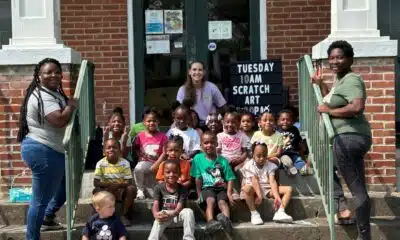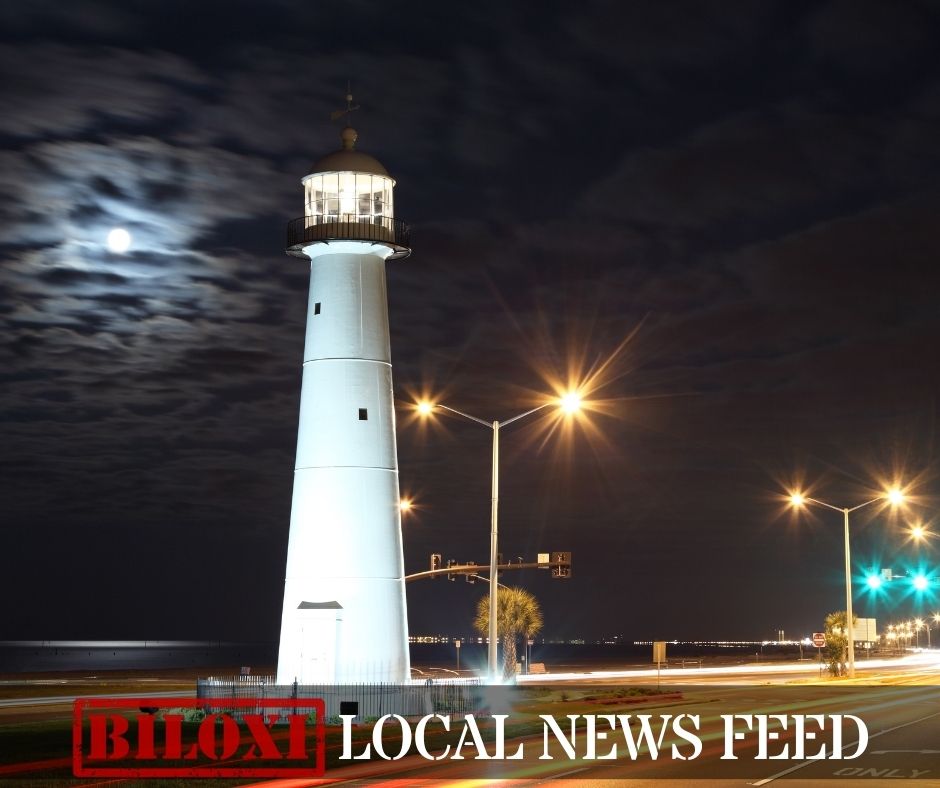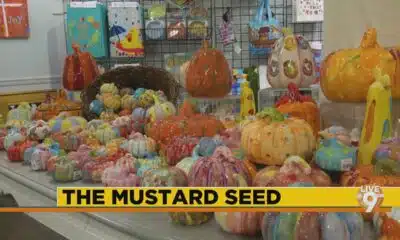Mississippi Today
JSU Development Foundation under scrutiny for alleged ‘unintended’ use of restricted dollars as presidential selection looms
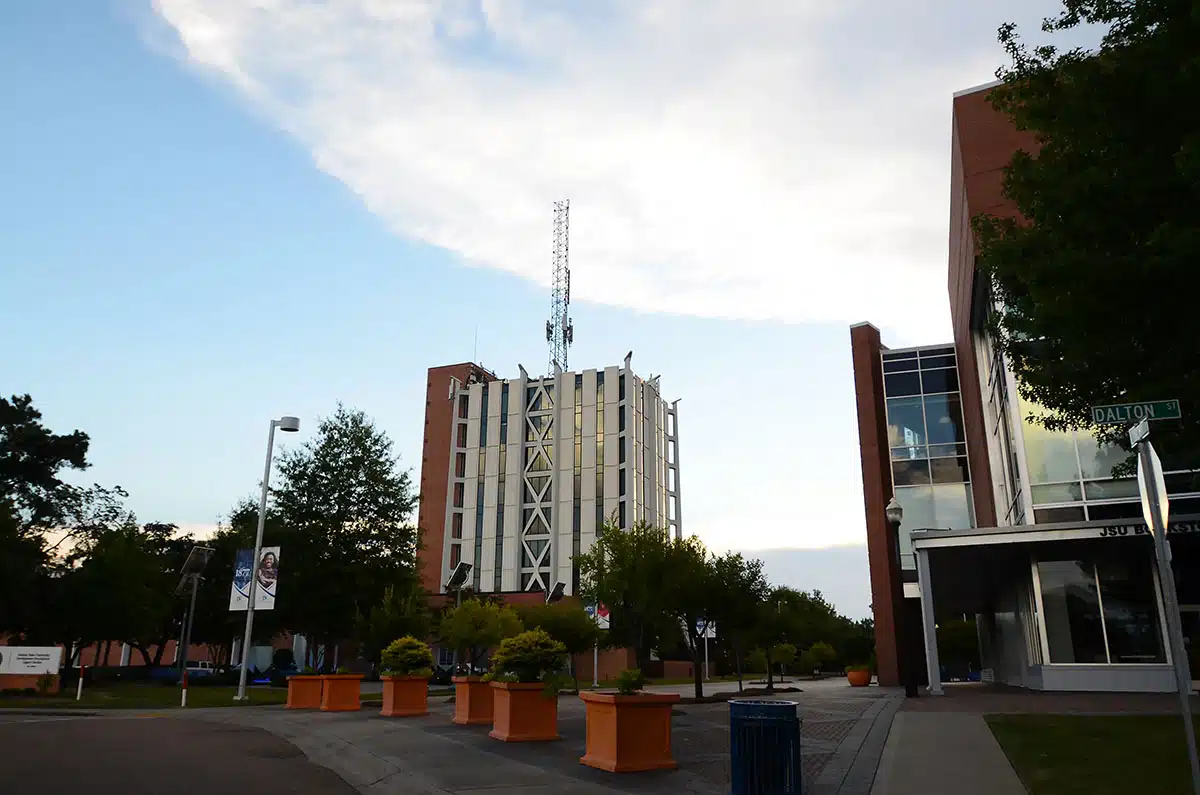
Concerns about poor recordkeeping, inadequate accountability and the possible “unintended” use of restricted dollars led a member of the Jackson State University Development Foundation board to quietly resign earlier this year.
In his June 23 resignation letter, Brian Johnson, a 2009 Jackson State graduate who had served on the board for six years, wrote that he was stepping down after the board failed to pass his motion for a forensic audit.
Johnson was alarmed by internal presentations that he wrote showed the cash-strapped foundation using donor-restricted dollars to pay for its general obligations. But the foundation’s recent annual audits, Johnson wrote, had no discussion of the potentially improper spending.
“As a business professional in the financial services industry, I can’t seem to comprehend how the JSUDF Board of Directors received two financial reports over the last two years from two different JSU Division of Institutional Advancement comptrollers indicating the unintended use of restricted/designated funds, but the Foundation’s CPA audited financial statements have no note or mention of this information,” he wrote.
When contacted by Mississippi Today, Johnson would not comment for this story.
Johnson’s resignation letter is part of a cache of internal foundation documents that was obtained by Mississippi Today as Jackson State is poised to receive a new president. Last week, the Institutions of Higher Learning governing board for Mississippi’s public universities held a special-called meeting to discuss the imminent hire for just 16 minutes.
Taken together, the documents raise questions at the core of the foundation’s fiscal health. One document showed the foundation lacking about $7.6 million in “cash on hand to cover fund balances” and its operating budget, on average, bleeding at least $100,000 every year since 2012. Another, an internal audit that Jackson State completed in late September, determined the foundation was commingling in one account its operating and donor-restricted dollars for alumni, athletics and annual scholarships.
Brian Mittendorf, an Ohio State University accounting professor who reviewed the documents for Mississippi Today, said it wasn’t clear how the foundation has enough liquidity, or cash-on-hand, to meet its obligations, including scholarships and financial support for university athletics.
“There’s this consistent nagging issue which is that a substantial amount of their assets are restricted, though the exact amount is somewhat unclear,” he said.
But Mittendorf said he was only able to reach that conclusion — one of the concerns that led Johnson to resign — after reading “between the lines” of the foundation’s audit. He didn’t understand why the foundation’s audits are not drawing attention to the existential financial situation it appears to be facing.
“Somewhat surprisingly, they aren’t shouting about that from the rooftops in the financial statement,” Mittendorf said.
In an email, an IHL spokesperson wrote that “IHL does not govern the JSU Development Foundation, so questions about the foundation’s assets should be addressed to the foundation.” But IHL’s bylaws do permit the board to exercise a certain amount of oversight over the university-affiliated foundations, such as giving prior approval if a president wishes to sever ties with the foundation.
The foundation chair, Guyna “Gee” Johnson, a managing director of global fund ratings at S&P who has led the foundation since 2021, asked Mississippi Today to email her questions for this article but did not respond to repeated requests for comment by press time.
In a sit-down interview with JSUTV earlier this year, Gee said that “one of the things the board would like to do is to bring more attention to what we’re doing so people feel safe and they trust that we are being good stewards over their money so that they can continue to help our students grow.”
$7 million cash on-hand deficit?
The development foundation was founded in the 1960s to financially support Jackson State. It has been in hot water in recent years after an independent audit that IHL called for found tens of thousands of dollars in questionable credit card spending in 2014, leading the foundation to cancel its credit cards.
Johnson got on the board in 2017, a year after that independent audit was made public by the Clarion Ledger. But internally, the foundation was facing even more challenges than Johnson knew, he wrote in his resignation letter.
“It was then I learned the Foundation was behind on 990’s, facing legal issues due to past Foundation ventures/contracts and not having completed audited financial statements for the two prior years,” he wrote.
The board proceeded to work together to resolve the issues, Johnson wrote. In 2019, a resolution was introduced to acknowledge that the board had borrowed funds from temporarily restricted accounts, as well as its permanently restricted endowment, due to “having insufficient unrestricted operating dollars.”
The foundation, according to the resolution, intended to repay the “interfund debt,” which at the time totaled about $1.8 million. It’s unclear from the document Mississippi Today received if the foundation adopted the resolution.
And last year, the foundation finally executed the sale of One University Place, a mixed-use apartment complex across the street from Jackson State’s campus that was draining the foundation’s bank accounts, to the university for $6.9 million.
But it appears the sale wasn’t enough to get the foundation in the clear, according to the foundation’s 2021 audit and two internal PowerPoints presented earlier this year by Keilani Vanish and Sophia Williams, comptrollers for the foundation.
As of May 18, the date of the most recent presentation, the foundation’s restricted fund balances, which cover its designated accounts, totaled $11.6 million. But the foundation had just under $4 million in its operating accounts, leaving a roughly $7 million deficit in “cash on hand to cover fund balances.” A presentation in February showed a similar situation.
That’s when Johnson, who served on the finance committee, began to wonder why that information wasn’t included in the foundation’s audited financial statements, according to his letter.
The foundation should be communicating the difference between those documents to board members, Mittendorf said.
“The concerning part is if someone on a board is unaware of why those things deviate,” he said.
Mittendorf reviewed the internal presentations and the foundation’s 2021 audit, the most recent publicly available. Both documents, he said, were confusing for him to follow.
David Ewing, the accountant who oversaw the audit, said he couldn’t answer any questions about the foundation, because the university is “pretty strict” about the information it gives out and he didn’t want to lose a client.
Though Mittendorf didn’t go so far as to question whether the 2021 audit was accurate, he noted that it appeared to contradict itself. On page 3, the audit shows the foundation has about $33 million net assets “with donor restrictions, but on page 22, in a section titled “liquidity and availability,” the audit claims that the foundation has “no donor restricted net assets.”
That same section, Mittendorf pointed out, claims the foundation has access to about $35 million in “financial assets available to meet cash needs for general expenditures within one year.” But that doesn’t add up, he said, considering the audit also states the foundation has just under $42 million in total financial assets at year-end, with over $37 million of that in the restricted endowment.
Meanwhile, the foundation is holding a substantial amount of debt. In 2021, the foundation extended its credit line with Merrill Lynch from $2 million to $6.9 million, “secured with certain investments accounts held by Merrill Lynch in the name of the Foundation.” The balance was $5.9 million, according to the May comptroller presentation.
At BankPlus, the foundation has a $3 million credit line but the most recent balance is unclear.
A one-page internal audit
Johnson wasn’t the only one with questions. On June 1, an ex-officio board member emailed Gee and the board because there were rumors in the community about the presentation that allegedly showed the foundation spending restricted dollars.
When Gee replied-all on June 9, she wrote that if the community had access to that presentation, which was prepared for “various internal management or other analytical purposes” and was not an official financial position, then an “extremely serious breach of confidentiality” had occurred.
“The matters you mention in your email have been things that JSUDF boards, University Presidents and University CFOs have been aware of for at least 15+ years, and we have been addressing directly through corrective measures,” Gee wrote. “As we have University turnover, the board chair’s transition policy is to immediately request a meeting to properly provide an official financial update, provide and (sic) overview of the Foundation and align our goals with the new administration’s strategic plan.”
A week later, a similar concern about the “potential misuse of donated funds” led Jackson State to start conducting an internal audit of the foundation that was finalized in September, according to a copy.
It was only one page.
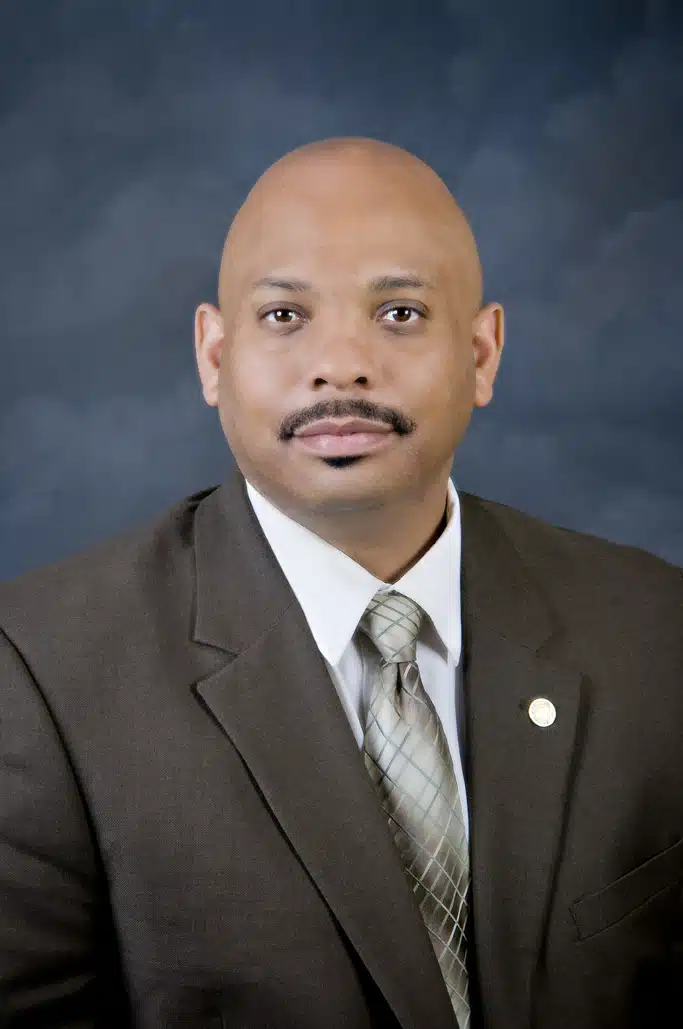
Though the university’s internal auditor, Christopher Thomas, wrote in an email that IHL Commissioner Alfred Rankins requested the internal audit, an IHL spokesperson wrote in an email that Elayne Hayes-Anthony called for it.
Hayes-Anthony has been the university’s temporary acting president since Thomas Hudson resigned earlier this year for reasons that remain unclear. She holds one of seven ex-officio spots on the board, the one reserved for the university president.
“Commissioner Rankins did not call for an internal audit of the foundation,” Kim Gallaspy, IHL’s interim communications director, wrote in an email to Mississippi Today. “Dr. Elayne Hayes-Anthony initiated the process by expressing concerns to the Board of Trustees about the use of JSU Development Foundation funds. Dr. Anthony was advised to exercise her authority to have her concerns investigated by utilizing the university’s internal audit staff to review any Foundation books, records or accounts needed to monitor and verify proper use of donated funds.”
Thomas wrote that he did not find any “current evidence” of misused donor funds, but that the foundation’s bank accounts only had $4.4 million as of Aug. 31 while the “designated accounts” totaled $11.8 million, a finding that correlates with the internal presentations.
“While the Development Foundation liquid funds are not adequate to cover the Designed Accounts, this does not represent the financial position of the Development Foundation,” he wrote. “The Foundation holds a multitude of assets that can be utilized to meet its financial obligation to the University.”
Though Thomas did not specify what those assets are, he did identify six areas where the foundation could improve its internal controls. Specifically, he recommended the foundation should monitor its budgets “based on actual revenue throughout the fiscal year to reduce overspending.”
He also recommended the foundation establish “separate bank accounts” for the operating budget — called “the Excellence Fund” — and the donor gifts, which were commingled.
Mittendorf said foundations should keep records in a way that prevents concerns about funds getting mixed up.
“When you have donor designed and donor restricted gifts, you want impeccable record keeping that segregates the funds,” he said.
It’s unclear if the foundation has done that.
This article first appeared on Mississippi Today and is republished here under a Creative Commons license.
Mississippi Today
Mississippi prepares for another execution
The Mississippi Supreme Court has set the execution of a man who kidnapped and murdered a 20-year-old community college student in north Mississippi 30 years ago.
Charles Ray Crawford, 59, is set to be executed Oct. 15 at the Mississippi State Penitentiary at Parchman, after multiple requests by the attorney general’s office.
Eight justices joined the majority opinion to set the execution, concluding that Crawford has exhausted all state and federal legal remedies. Mississippi Supreme Court Justice T. Kenneth Griffis Jr. wrote the Friday opinion. Justice David Sullivan did not participate.
However, Kristy Noble with the Mississippi Office of Capital Post-Conviction Counsel released a statement saying it will file another appeal with the U.S. Supreme Court.
“”Mr. Crawford’s inexperienced trial counsel conceded his guilt to the jury — against Mr.
Crawford’s timely and repeated objections,” Noble said in the statement. “Mr. Crawford told his counsel to pursue a not guilty verdict. Counsel did just the opposite, which is precisely what the U.S. Supreme Court says counsel cannot do,” Noble said in the statement.
“A trial like Mr. Crawford’s – one where counsel concedes guilt over his client’s express wishes – is essentially no trial at all.”
Last fall, Crawford’s attorneys asked the court not to set an execution date because he hadn’t exhausted appeal efforts in federal court to challenge a rape conviction that is not tied to his death sentence. In June, the U.S. Supreme Court declined to take up Crawford’s case.
A similar delay occurred a decade ago, when the AG’s office asked the court to reset Crawford’s execution date, but that was denied because efforts to appeal his unrelated rape conviction were still pending.
After each unsuccessful filing, the attorney general’s office asked the Mississippi Supreme Court to set Crawford’s execution date.
On Friday, the court also denied Crawford’s third petition for post-conviction relief and a request for oral argument. It accepted the state’s motion to dismiss the petition. Seven justices concurred and Justice Leslie King concurred in result only. Again, Justice Sullivan did not participate.
Crawford was convicted and sentenced to death in Lafayette County for the 1993 rape and murder of North Mississippi Community College student Kristy Ray.
Days before he was set to go to trial on separate aggravated assault and rape charges, he kidnapped Ray from her parents’ Tippah County home, leaving ransom notes. Crawford took Ray to an abandoned barn where he stabbed her, and his DNA was found on her, indicating he sexually assaulted her, according to court records.
Crawford told police he had blackouts and only remembered parts of the crime, but not killing Ray. Later he admitted “he must of killed her” and led police to Ray’s body, according to court records.
At his 1994 trial he presented an insanity defense, including that he suffered from psychogenic amnesia – periods of time lapse without memory. Medical experts who provided rebuttal testimony said Crawford didn’t have psychogenic amnesia and didn’t show evidence of bipolar illness.
The last person executed in Mississippi was Richard Jordan in June, previously the state’s oldest and longest serving person on death row.
There are 36 people on death row, according to records from the Mississippi Department of Corrections.
Update 9/15/25: This story has been updated to include a response from the Mississippi Office of Capital Post-Conviction Counsel
This article first appeared on Mississippi Today and is republished here under a Creative Commons Attribution-NoDerivatives 4.0 International License.
The post Mississippi prepares for another execution appeared first on mississippitoday.org
Note: The following A.I. based commentary is not part of the original article, reproduced above, but is offered in the hopes that it will promote greater media literacy and critical thinking, by making any potential bias more visible to the reader –Staff Editor.
Political Bias Rating: Centrist
The article presents a factual and balanced account of the legal proceedings surrounding a scheduled execution in Mississippi. It includes perspectives from both the state’s attorney general’s office and the defense counsel, without using emotionally charged language or advocating for a particular political stance. The focus on legal details and court decisions reflects a neutral, informative approach typical of centrist reporting.
Mississippi Today
Presidents are taking longer to declare major natural disasters. For some, the wait is agonizing
TYLERTOWN — As an ominous storm approached Buddy Anthony’s one-story brick home, he took shelter in his new Ford F-250 pickup parked under a nearby carport.
Seconds later, a tornado tore apart Anthony’s home and damaged the truck while lifting it partly in the air. Anthony emerged unhurt. But he had to replace his vehicle with a used truck that became his home while waiting for President Donald Trump to issue a major disaster declaration so that federal money would be freed for individuals reeling from loss. That took weeks.
“You wake up in the truck and look out the windshield and see nothing. That’s hard. That’s hard to swallow,” Anthony said.
Disaster survivors are having to wait longer to get aid from the federal government, according to a new Associated Press analysis of decades of data. On average, it took less than two weeks for a governor’s request for a presidential disaster declaration to be granted in the 1990s and early 2000s. That rose to about three weeks during the past decade under presidents from both major parties. It’s taking more than a month, on average, during Trump’s current term, the AP found.
The delays mean individuals must wait to receive federal aid for daily living expenses, temporary lodging and home repairs. Delays in disaster declarations also can hamper recovery efforts by local officials uncertain whether they will receive federal reimbursement for cleaning up debris and rebuilding infrastructure. The AP collaborated with Mississippi Today and Mississippi Free Press on the effects of these delays for this report.
“The message that I get in the delay, particularly for the individual assistance, is that the federal government has turned its back on its own people,” said Bob Griffin, dean of the College of Emergency Preparedness, Homeland Security and Cybersecurity at the University at Albany in New York. “It’s a fundamental shift in the position of this country.”
The wait for disaster aid has grown as Trump remakes government
The Federal Emergency Management Agency often consults immediately with communities to coordinate their initial disaster response. But direct payments to individuals, nonprofits and local governments must wait for a major disaster declaration from the president, who first must receive a request from a state, territory or tribe. Major disaster declarations are intended only for the most damaging events that are beyond the resources of states and local governments.
Trump has approved more than two dozen major disaster declarations since taking office in January, with an average wait of almost 34 days after a request. That ranged from a one-day turnaround after July’s deadly flash flooding in Texas to a 67-day wait after a request for aid because of a Michigan ice storm. The average wait is up from a 24-day delay during his first term and is nearly four times as long as the average for former Republican President George H.W. Bush, whose term from 1989-1993 coincided with the implementation of a new federal law setting parameters for disaster determinations.
The delays have grown over time, regardless of the party in power. Former Democratic President Joe Biden, in his last year in office, averaged 26 days to declare major disasters — longer than any year under former Democratic President Barack Obama.

FEMA did not respond to the AP’s questions about what factors are contributing to the trend.
Others familiar with FEMA noted that its process for assessing and documenting natural disasters has become more complex over time. Disasters have also become more frequent and intense because of climate change, which is mostly caused by the burning of fuels such as gas, coal and oil.
The wait for disaster declarations has spiked as Trump’s administration undertakes an ambitious makeover of the federal government that has shed thousands of workers and reexamined the role of FEMA. A recently published letter from current and former FEMA employees warned the cuts could become debilitating if faced with a large-enough disaster. The letter also lamented that the Trump administration has stopped maintaining or removed long-term planning tools focused on extreme weather and disasters.
Shortly after taking office, Trump floated the idea of “getting rid” of FEMA, asserting: “It’s very bureaucratic, and it’s very slow.”
FEMA’s acting chief suggested more recently that states should shoulder more responsibility for disaster recovery, though FEMA thus far has continued to cover three-fourths of the costs of public assistance to local governments, as required under federal law. FEMA pays the full cost of its individual assistance.
Former FEMA Administrator Pete Gaynor, who served during Trump’s first term, said the delay in issuing major disaster declarations likely is related to a renewed focus on making sure the federal government isn’t paying for things state and local governments could handle.
“I think they’re probably giving those requests more scrutiny,” Gaynor said. “And I think it’s probably the right thing to do, because I think the (disaster) declaration process has become the ‘easy button’ for states.”
The Associated Press on Monday received a statement from White House spokeswoman Abigail Jackson in response to a question about why it is taking longer to issue major natural disaster declarations:
“President Trump provides a more thorough review of disaster declaration requests than any Administration has before him. Gone are the days of rubber stamping FEMA recommendations – that’s not a bug, that’s a feature. Under prior Administrations, FEMA’s outsized role created a bloated bureaucracy that disincentivized state investment in their own resilience. President Trump is committed to right-sizing the Federal government while empowering state and local governments by enabling them to better understand, plan for, and ultimately address the needs of their citizens. The Trump Administration has expeditiously provided assistance to disasters while ensuring taxpayer dollars are spent wisely to supplement state actions, not replace them.”

In Mississippi, frustration festered during wait for aid
The tornado that struck Anthony’s home in rural Tylertown on March 15 packed winds up to 140 mph. It was part of a powerful system that wrecked homes, businesses and lives across multiple states.
Mississippi’s governor requested a federal disaster declaration on April 1. Trump granted that request 50 days later, on May 21, while approving aid for both individuals and public entities.
On that same day, Trump also approved eight other major disaster declarations for storms, floods or fires in seven other states. In most cases, more than a month had passed since the request and about two months since the date of those disasters.
If a presidential declaration and federal money had come sooner, Anthony said he wouldn’t have needed to spend weeks sleeping in a truck before he could afford to rent the trailer where he is now living. His house was uninsured, Anthony said, and FEMA eventually gave him $30,000.
In nearby Jayess in Lawrence County, Dana Grimes had insurance but not enough to cover the full value of her damaged home. After the eventual federal declaration, Grimes said FEMA provided about $750 for emergency expenses, but she is now waiting for the agency to determine whether she can receive more.

“We couldn’t figure out why the president took so long to help people in this country,” Grimes said. “I just want to tie up strings and move on. But FEMA — I’m still fooling with FEMA.”
Jonathan Young said he gave up on applying for FEMA aid after the Tylertown tornado killed his 7-year-old son and destroyed their home. The process seemed too difficult, and federal officials wanted paperwork he didn’t have, Young said. He made ends meet by working for those cleaning up from the storm.
“It’s a therapy for me,” Young said, “to pick up the debris that took my son away from me.”
Historically, presidential disaster declarations containing individual assistance have been approved more quickly than those providing assistance only to public entities, according to the AP’s analysis. That remains the case under Trump, though declarations for both types are taking longer.
About half the major disaster declarations approved by Trump this year have included individual assistance.
Some people whose homes are damaged turn to shelters hosted by churches or local nonprofit organizations in the initial chaotic days after a disaster. Others stay with friends or family or go to a hotel, if they can afford it.
But some insist on staying in damaged homes, even if they are unsafe, said Chris Smith, who administered FEMA’s individual assistance division under three presidents from 2015-2022. If homes aren’t repaired properly, mold can grow, compounding the recovery challenges.

That’s why it’s critical for FEMA’s individual assistance to get approved quickly — ideally, within two weeks of a disaster, said Smith, who’s now a disaster consultant for governments and companies.
“You want to keep the people where they are living. You want to ensure those communities are going to continue to be viable and recover,” Smith said. “And the earlier that individual assistance can be delivered … the earlier recovery can start.”
In the periods waiting for declarations, the pressure falls on local officials and volunteers to care for victims and distribute supplies.
In Walthall County, where Tylertown is, insurance agent Les Lampton remembered watching the weather news as the first tornado missed his house by just an eighth of a mile. Lampton, who moonlights as a volunteer firefighter, navigated the collapsed trees in his yard and jumped into action. About 45 minutes later, the second tornado hit just a mile away.
“It was just chaos from there on out,” Lampton said.
Walthall County, with a population of about 14,000, hasn’t had a working tornado siren in about 30 years, Lampton said. He added there isn’t a public safe room in the area, although a lot of residents have ones in their home.
Rural areas with limited resources are hit hard by delays in receiving funds through FEMA’s public assistance program, which, unlike individual assistance, only reimburses local entities after their bills are paid. Long waits can stoke uncertainty and lead cost-conscious local officials to pause or scale-back their recovery efforts.

In Walthall County, officials initially spent about $700,000 cleaning up debris, then suspended the cleanup for more than a month because they couldn’t afford to spend more without assurance they would receive federal reimbursement, said county emergency manager Royce McKee. Meanwhile, rubble from splintered trees and shattered homes remained piled along the roadside, creating unsafe obstacles for motorists and habitat for snakes and rodents.
When it received the federal declaration, Walthall County took out a multimillion-dollar loan to pay contractors to resume the cleanup.
“We’re going to pay interest and pay that money back until FEMA pays us,” said Byran Martin, an elected county supervisor. “We’re hopeful that we’ll get some money by the first of the year, but people are telling us that it could be [longer].”
Lampton, who took after his father when he joined the volunteer firefighters 40 years ago, lauded the support of outside groups such as Cajun Navy, Eight Days of Hope, Samaritan’s Purse and others. That’s not to mention the neighbors who brought their own skid steers and power saws to help clear trees and other debris, he added.
“That’s the only thing that got us through this storm, neighbors helping neighbors,” Lampton said. “If we waited on the government, we were going to be in bad shape.”
Lieb reported from Jefferson City, Missouri, and Wildeman from Hartford, Connecticut.
Update 98/25: This story has been updated to include a White House statement released after publication.
This article first appeared on Mississippi Today and is republished here under a Creative Commons Attribution-NoDerivatives 4.0 International License.
The post Presidents are taking longer to declare major natural disasters. For some, the wait is agonizing appeared first on mississippitoday.org
Note: The following A.I. based commentary is not part of the original article, reproduced above, but is offered in the hopes that it will promote greater media literacy and critical thinking, by making any potential bias more visible to the reader –Staff Editor.
Political Bias Rating: Center-Left
This article presents a critical view of the Trump administration’s handling of disaster declarations, highlighting delays and their negative impacts on affected individuals and communities. It emphasizes concerns about government downsizing and reduced federal support, themes often associated with center-left perspectives that favor robust government intervention and social safety nets. However, it also includes statements from Trump administration officials defending their approach, providing some balance. Overall, the tone and framing lean slightly left of center without being overtly partisan.
Mississippi Today
Northeast Mississippi speaker and worm farmer played key role in Coast recovery after Hurricane Katrina
The 20th anniversary of Hurricane Katrina slamming the Mississippi Gulf Coast has come and gone, rightfully garnering considerable media attention.
But still undercovered in the 20th anniversary saga of the storm that made landfall on Aug. 29, 2005, and caused unprecedented destruction is the role that a worm farmer from northeast Mississippi played in helping to revitalize the Coast.
House Speaker Billy McCoy, who died in 2019, was a worm farmer from the Prentiss, not Alcorn County, side of Rienzi — about as far away from the Gulf Coast as one could be in Mississippi.
McCoy grew other crops, but a staple of his operations was worm farming.
Early after the storm, the House speaker made a point of touring the Coast and visiting as many of the House members who lived on the Coast as he could to check on them.
But it was his action in the forum he loved the most — the Mississippi House — that is credited with being key to the Coast’s recovery.
Gov. Haley Barbour had called a special session about a month after the storm to take up multiple issues related to Katrina and the Gulf Coast’s survival and revitalization. The issue that received the most attention was Barbour’s proposal to remove the requirement that the casinos on the Coast be floating in the Mississippi Sound.
Katrina wreaked havoc on the floating casinos, and many operators said they would not rebuild if their casinos had to be in the Gulf waters. That was a crucial issue since the casinos were a major economic engine on the Coast, employing an estimated 30,000 in direct and indirect jobs.
It is difficult to fathom now the controversy surrounding Barbour’s proposal to allow the casinos to locate on land next to the water. Mississippi’s casino industry that was birthed with the early 1990s legislation was still new and controversial.
Various religious groups and others had continued to fight and oppose the casino industry and had made opposition to the expansion of gambling a priority.
Opposition to casinos and expansion of casinos was believed to be especially strong in rural areas, like those found in McCoy’s beloved northeast Mississippi. It was many of those rural areas that were the homes to rural white Democrats — now all but extinct in the Legislature but at the time still a force in the House.
So, voting in favor of casino expansion had the potential of being costly for what was McCoy’s base of power: the rural white Democrats.
Couple that with the fact that the Democratic-controlled House had been at odds with the Republican Barbour on multiple issues ranging from education funding to health care since Barbour was inaugurated in January 2004.
Barbour set records for the number of special sessions called by the governor. Those special sessions often were called to try to force the Democratic-controlled House to pass legislation it killed during the regular session.
The September 2005 special session was Barbour’s fifth of the year. For context, current Gov. Tate Reeves has called four in his nearly six years as governor.
There was little reason to expect McCoy to do Barbour’s bidding and lead the effort in the Legislature to pass his most controversial proposal: expanding casino gambling.
But when Barbour ally Lt. Gov. Amy Tuck, who presided over the Senate, refused to take up the controversial bill, Barbour was forced to turn to McCoy.
The former governor wrote about the circumstances in an essay he penned on the 20th anniversary of Hurricane Katrina for Mississippi Today Ideas.
“The Senate leadership, all Republicans, did not want to go first in passing the onshore casino law,” Barbour wrote. “So, I had to ask Speaker McCoy to allow it to come to the House floor and pass. He realized he should put the Coast and the state’s interests first. He did so, and the bill passed 61-53, with McCoy voting no.
“I will always admire Speaker McCoy, often my nemesis, for his integrity in putting the state first.”
Incidentally, former Rep. Bill Miles of Fulton, also in northeast Mississippi, was tasked by McCoy with counting, not whipping votes, to see if there was enough support in the House to pass the proposal. Not soon before the key vote, Miles said years later, he went to McCoy and told him there were more than enough votes to pass the legislation so he was voting no and broached the idea of the speaker also voting no.
It is likely that McCoy would have voted for the bill if his vote was needed.
Despite his no vote, the Biloxi Sun Herald newspaper ran a large photo of McCoy and hailed the Rienzi worm farmer as a hero for the Mississippi Gulf Coast.
This article first appeared on Mississippi Today and is republished here under a Creative Commons Attribution-NoDerivatives 4.0 International License.
The post Northeast Mississippi speaker and worm farmer played key role in Coast recovery after Hurricane Katrina appeared first on mississippitoday.org
Note: The following A.I. based commentary is not part of the original article, reproduced above, but is offered in the hopes that it will promote greater media literacy and critical thinking, by making any potential bias more visible to the reader –Staff Editor.
Political Bias Rating: Centrist
The article presents a factual and balanced account of the political dynamics surrounding Hurricane Katrina recovery efforts in Mississippi, focusing on bipartisan cooperation between Democratic and Republican leaders. It highlights the complexities of legislative decisions without overtly favoring one party or ideology, reflecting a neutral and informative tone typical of centrist reporting.
-
News from the South - Kentucky News Feed7 days ago
Lexington man accused of carjacking, firing gun during police chase faces federal firearm charge
-
News from the South - Alabama News Feed7 days ago
Zaxby's Player of the Week: Dylan Jackson, Vigor WR
-
News from the South - Arkansas News Feed7 days ago
Arkansas medical marijuana sales on pace for record year
-
News from the South - Missouri News Feed7 days ago
Local, statewide officials react to Charlie Kirk death after shooting in Utah
-
Local News Video7 days ago
William Carey University holds 'tailgates and tourniquets' blood drive
-
News from the South - North Carolina News Feed5 days ago
What we know about Charlie Kirk shooting suspect, how he was caught
-
Local News7 days ago
US stocks inch to more records as inflation slows and Oracle soars
-
Local News6 days ago
Russian drone incursion in Poland prompts NATO leaders to take stock of bigger threats



